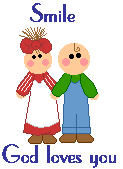

"so that I come again
to my father's house in peace, and Jehovah
"Little House in the
Big Woods"
"Then I came again into an open place, and there, right in the middle of my road, I saw a big black bear." |
![]()

"I am Jehovah thy God,
who brought thee out of the land of
Definition: an expression, such as a metaphor, hyberbole, or simile, that uses words in a nonliteral, unusual, or intensive manner to produce a certain effect; trope. Mrs. Wilder uses figures of speech in the book "Little House in the Big Woods." "Laura
is like a wise owl." "The classroom was a
beehive of activity." Mrs. Ingalls gives human
feelings and actions to animals or objects in the cabin. Swish, Crunch, Bang, Pow Related Links to Figures of Speech
|

"and thou shalt teach
them diligently unto thy children, and shalt
Very Interesting Words! |




"Let all the house
of Israel therefore know assuredly, that God hath made
him both Lord and Christ, this Jesus whom ye
State Map http://www.wistravel.com/statemap.html Wisconsin became the 30th state, May 29, 1848. Indians named the big river and the land around it "Meskousing." Although authorities do not agree from which tribe the word came - Chippewa or Winnebago - they are certain it means: "where the waters gather." The French spelled it "Ouisconsin." The English spelled it various ways. By act of Territorial legislature in 1845, the name and spelling legally became Wisconsin.
State
Tree: Sugar Maple |

![]()
![]()
For we know that if the earthly house of our tabernacle be dissolved, we have a building from God, a house not made with hands, eternal, in the heavens" 2Corinthians 5:1
Did
you know that you can visit Laura Ingall's
cabin Why
don't you make your own log cabin? You could use lincoln Do you know what an immigrant is? The word immigrant comes from the Latin word meaning to move into. Most
of the people who live in the United States today have ancestors who were
immigrants. Our ancestors left their native lands for
different reasons. The United States offered many things
to the new immigrants and freedom of religion was one of
the most important reasons that people came to America. |
![]()